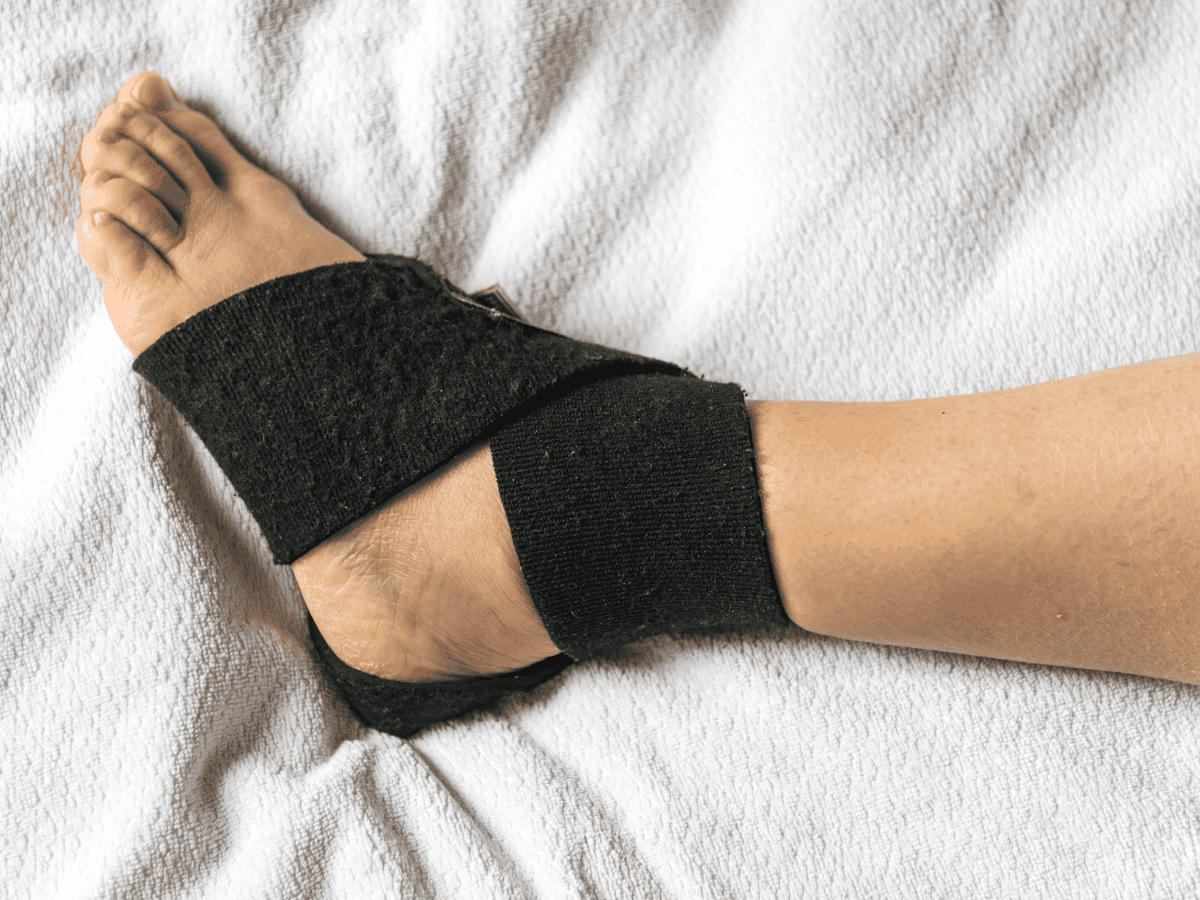
Ankle sprains are one of the most common joint injuries out there, and for good reason. Most of us, at some point in our lives, have taken a wrong step off a curb, landed awkwardly playing basketball, or simply misjudged our footing on uneven ground. When that happens, the ligaments, tough bands of tissue that connect bones and stabilize joints, can stretch or tear.
An estimated 25,000 Americans sprain an ankle every week. That makes up nearly 40% of sports-related injuries reported in emergency departments. Yet despite how frequent ankle sprains are, they’re often underestimated, and mishandling them can lead to chronic pain and long-term instability. Our goal here is to help you better understand your injury, demystify treatment options, and empower your recovery.
Ankle sprains typically result from one common motion: the foot rolling inward while the ankle turns outward. This movement can stretch or tear the ligaments, especially the lateral ones on the outside of the ankle.
Here are the most common causes:
Some individuals are more prone to ankle sprains than others. You might be at higher risk if you:
How do you know if your ankle injury is a sprain, or something more serious?
Typical symptoms include:
While mild sprains might only cause slight discomfort, more severe cases can mimic the symptoms of fractures or tendon ruptures. That’s why understanding the extent of your injury is key to proper healing.
Diagnosis begins with a thorough physical assessment. We evaluate swelling, tenderness, and range of motion. If needed, imaging like an X-ray can rule out fractures, while an MRI helps assess ligament damage.
Doctors often use the Ottawa Ankle Rules, a set of clinical criteria, to determine whether imaging is necessary. These guidelines help avoid unnecessary X-rays while still ensuring accurate diagnosis.
Ankle sprains come in three levels of severity:
Slight stretching of the ligament, minor swelling, and no joint instability.
Partial tear, moderate swelling and bruising, some instability.
Complete tear, significant swelling, severe pain, and major joint instability.
Understanding your sprain grade helps guide appropriate treatment timelines and expectations.
The RICE method (Rest, Ice, Compression, Elevation) is the backbone of early ankle sprain care. But it’s not the full story.
Here’s what treatment typically includes:
Beyond RICE, pain can be managed with anti-inflammatory medication, and some cases may benefit from temporary bracing or walking boots. Early movement is now often encouraged, especially in mild to moderate cases, to promote healing and circulation.
Rehab isn’t just for athletes, it’s for anyone who wants to make a full comeback without lingering instability or future injury.
Here’s where physical therapy steps in. A well-designed recovery plan may include:
One patient we worked with at SFL came in a few days post-injury, unable to bear weight. Through structured rehab and dedicated therapy, they were jogging within six weeks, without pain or instability. That kind of recovery is possible with a consistent approach.
Once you’ve had one ankle sprain, your risk of recurrence increases. But there’s good news: the right habits can dramatically reduce this risk.
Preventive measures include:
Some athletes incorporate routine ankle exercises into their general workout to ‘train their stability,’ much like cardio trains the heart.
Surgical repair isn’t necessary for most ankle sprains. However, in cases of Grade III sprains where the ligament is completely torn, and the ankle remains unstable despite conservative treatment, surgery may be recommended.
Procedures may involve:
Your orthopedic specialist will consider factors like functional impairment, age, activity level, and response to rehabilitation before recommending surgery.
If you’re dealing with recurring ankle sprains, pain that won’t go away, or instability that’s impacting your daily life, it’s time to take the next step. Contact South Florida Multispecialty Hospital today for expert diagnosis, personalized recovery plans, and compassionate care to get you back on your feet, stronger than ever.
An ankle sprain occurs when ligaments supporting the ankle stretch or tear due to sudden movement, such as rolling or twisting the ankle, commonly during sports or uneven walking.
Mild sprains involve minor stretching without instability or significant swelling. Severe sprains may involve total ligament tears with major swelling, bruising, and the inability to bear weight.
Follow the RICE protocol immediately (Rest, Ice, Compression, Elevation). Avoid applying heat or continuing sports until a professional evaluation.
Recovery time varies by severity. Grade I may heal in about a week or two. Grade II may take 3–6 weeks, while Grade III can take weeks to months and sometimes requires surgery.
Seek care if pain persists beyond 48 hours, swelling worsens, you cannot bear weight, or if instability or recurring injuries occur.
Yes, physical therapy is crucial, especially in moderate to severe sprains. It restores strength, stability, and agility while reducing the risk of re-injury.
Range-of-motion drills, resistance band exercises, single-leg balance drills, and low-impact movements like swimming or cycling are commonly used.
Strengthen ankle and leg muscles, improve balance, wear supportive shoes, and consider bracing during high-risk activities.
Yes, including chronic instability, recurring sprains, and early-onset arthritis if not properly treated and rehabilitated.
Surgery may be recommended for Grade III sprains with persistent instability, especially if non-surgical treatment fails to restore normal function.
Your well-being is our top priority. Reach out today to discover how our dedicated team can support your health journey.
Have questions or want to learn more? Use the form below to get started!
Connect with South Florida’s trusted multispecialty care team and take control of your health with compassion and convenience.
©2025 South Florida Multispecialty Medical Group. All Rights Reserved.